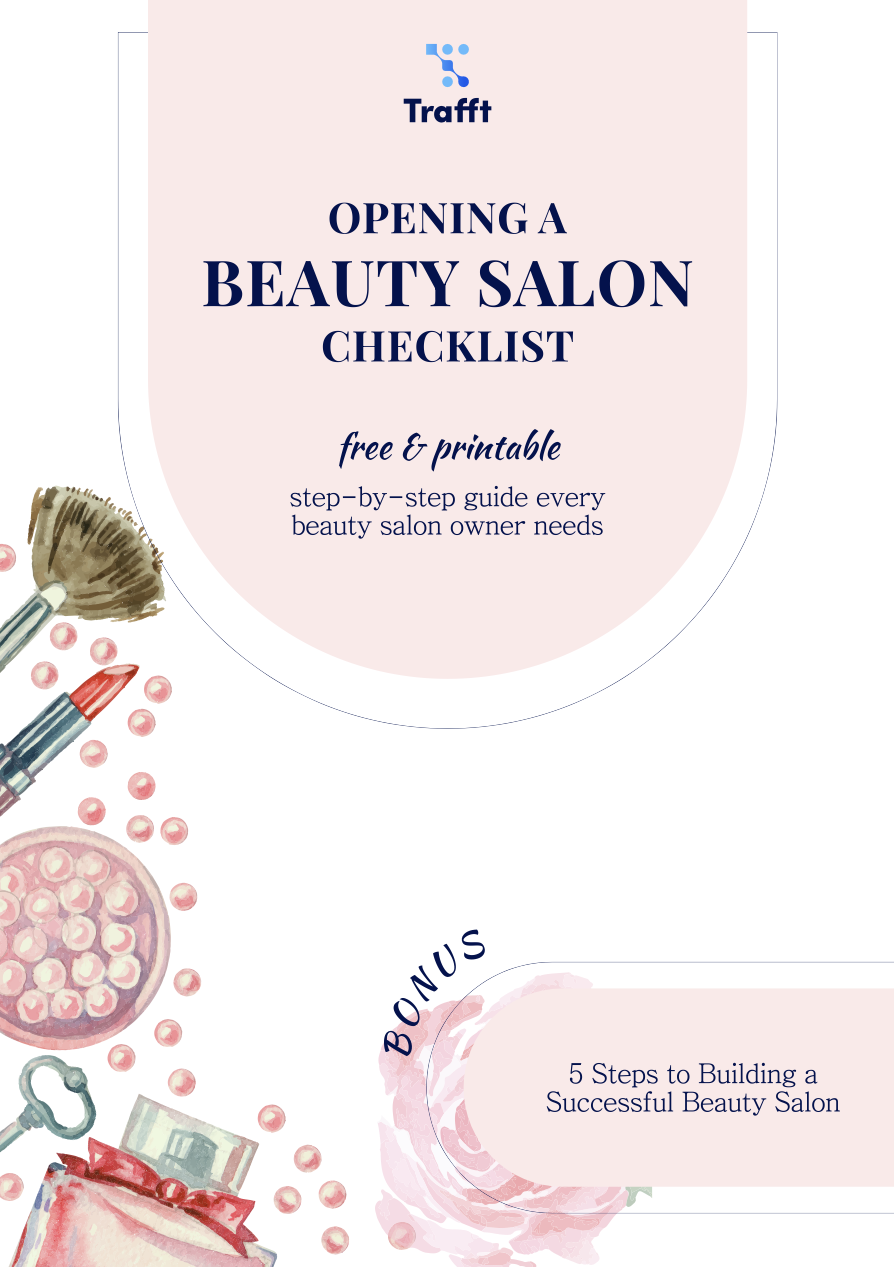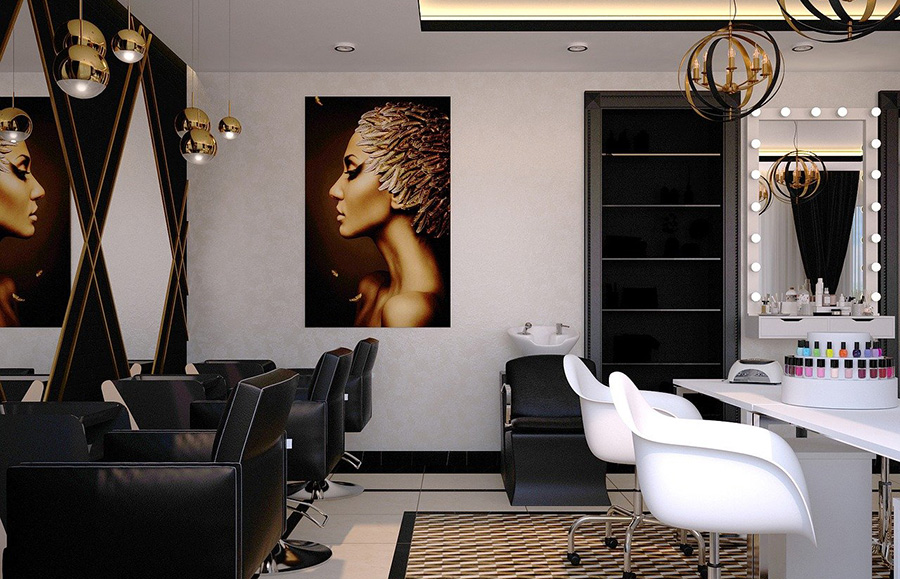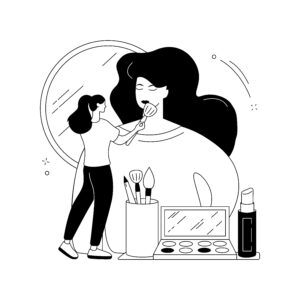You’ve finally decided to dive into the waters of entrepreneurship? You’ve got the skills in your hands to make people beautiful, but not much experience with branding? We’re here to help you!
Branding isn’t just a memorable logo or a pretty color scheme, it’s about creating an identity that resonates with your target audience. A well crafted brand will communicate the quality of your services, uniqueness of your salon, and the values that drive your business.
Let’s dive into how to create a salon brand, and boost your salon’s success!
Why is a Good Salon Branding Important?
Think of your salon as a person. Why would someone hang out with them, what makes them special, what kind of person are they? This is what salon branding is.
Apart from name and a logo, branding is the entire experience your salon offers, from the design of the space to the way your staff interacts with clients. Branding is shaping perceptions and building an emotional connection with your clients through a consistent message and visual cues that reflect the essence and values of your salon.
But why is it so important to do it right?
It simply attracts new customers by distinguishing you from competitions, retains customers and creates memorable experiences or values that align with their own, and lastly, branding helps you stand out from the crowd.
Branding shapes how clients see your salon, and influence their decisions to choose your service over others.
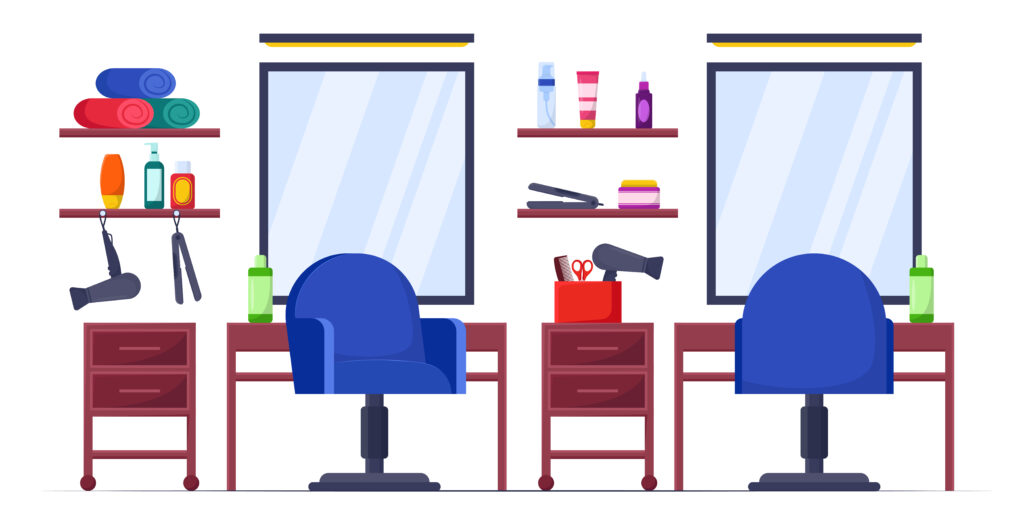
Salon Branding Checklist
In this salon branding checklist, we'll cover the key elements needed to build a cohesive and memorable salon brand that resonates with your target audience.
Define your brand identity
Defining your brand identity is the first step toward creating a salon that truly stands out. Your brand identity encompasses your salon’s personality, values, and the overall experience you want to offer clients.
Vision and mission
Your vision statement should capture the ultimate goal of your business - what you aspire to achieve in the long term. Think of it as your guiding star that’s providing direction and inspiration. For example, your vision could be to become the leading eco-friendly salon in your city, known for sustainability in all aspects of beauty care.
Your mission statement details the purpose of your salon - what you do, who you do it for, and how you do it. It should reflect your commitment to your customers and the unique aspects of your service that makes your salon special. A mission statement might be “We strive to provide personalized, creative beauty solutions in a welcoming environment, using environmentally friendly products and practices.”
Thank you for subscribing. Check your mail for details
Target audience
Understanding the demographics (age, gender, occupation), preferences (style, products, service expectation), and spending habits (average service ticket, frequency of visits) of your target audience allows you to tailor your services and marketing strategies to meet their specific needs.
For example, if your salon is in a busy business district, your ideal customer might be professionals looking for quick, high-quality services over lunch breaks. Knowing your audience will help you design promotions, choose the right communication channels, and create an atmosphere that’s appealing to those clients.
Brand personality
Think of your brand as a person, and give it human traits or characteristics that you want to be perceived by clients. These traits should resonate with the target audience and be reflected in all aspects of branding - from the design of your salon to the tone of your social media posts.
Common brand personalities include:
- Luxurious - High-end, exclusive, and elite
- Friendly - Welcoming, warm, and community-oriented
- Innovative - Modern, cutting-edge, and trend-setting
Each of these personalities will appeal to different types of clients, and should be consistently portrayed to establish a strong, cohesive identity.
When you define a clear mission and vision, understand your target audience, choose a resonant brand personality, you set the stage for all subsequent brand and marketing initiatives.
Choose visual branding elements
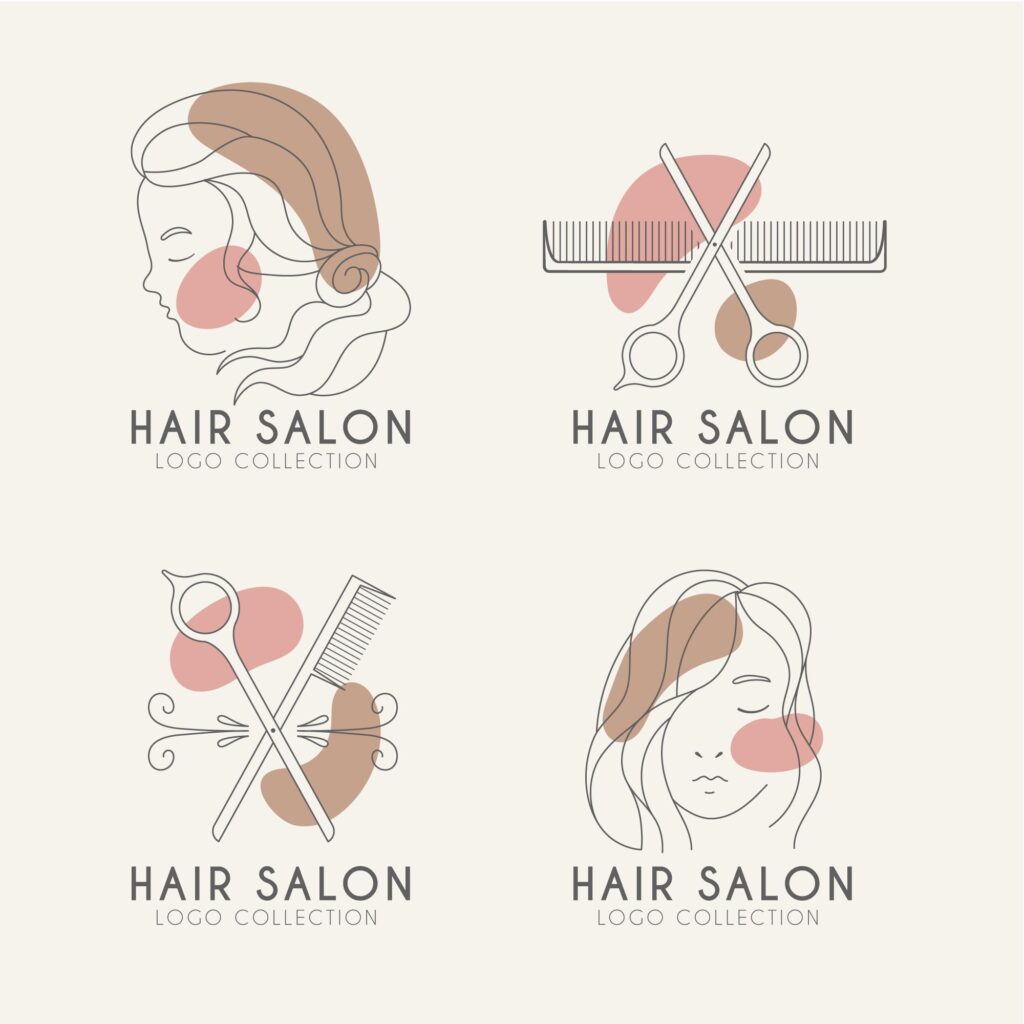
Logo design
Logo for salons is the first interaction with potential clients, so it must be designed effectively. Simplicity is key, design a logo that is simple, yet memorable. It should be easy to recognize and versatile enough to look good on various mediums. Your logo should also embody the personality and essence of your brand.
Color scheme
The color scheme you choose can evoke emotions and convey a message. You should use a consistent color palette across all branding materials to create a cohesive look. This includes your salon’s interior, marketing materials and digital presence. Be mindful of colors you choose, for example, blue can evoke feelings of calm and trust, while vibrant colors like orange or yellow might be perfect for salons targeting a younger clientele.
Typography
Select fonts that are easy to read and reflect your brand’s character. A sophisticated salon might opt for serif fonts, which are more elegant. A trendy salon might choose a bold, standout sans-serif font.
Imagery
Invest in a professional photography to capture the essence of your salon, from detailed shots of the space to action shots of service. High-quality images will showcase your salon’s unique offerings and aesthetics, but also ensure consistency across all your marketing platforms.
Each photo should reflect your brand’s values and tell a part of your salon’s story. This will enhance the overall perception of your brand.
Craft your brand message

Image by macrovector on Freepik
This message should clearly convey your salon’s values, mission, and the benefits clients can expect. It’s the foundation of how you connect with your audience, helping them understand why your salon is the right choice for their needs.
Unique selling proposition (USP)
Your unique selling proposition should be a clear statement that describes what sets your salon apart from competition. How do you define USP? Try this:
- Identify your strengths: Think of what your salon does best. This might be a signature service, a special technique, or a product line no other salon offers.
- Understand customer needs: Think of what your target customers need and want. What aspects of your services are most valuable to them? How does your salon meet these needs differently or better than your competition?
- Articulate clearly: Put your strengths and customer benefits into a concise statement that is easy to understand and remember. For example, “"Revitalize your beauty with our eco-friendly and organic salon treatments." if you focus on sustainability.
Brand story
People love to see your sincere motivations and values. They can make an emotional connection with you if you share your beginnings. It makes your business relatable and memorable. Here’s how to craft an effective brand story:
- Share your beginnings: Show people why and how your salon was founded. What inspired you to start your business? Why do you love doing it?
- Highlight your values: Tell them your core values that drive your business. Whether it’s commitment to quality, customer care, innovation, or sustainability, let these principles shine through your story.
- Connect emotionally: Try to engage your clients on an emotional level. Share testimonials that demonstrate the impact of your services on your clients’ life. Stories of transformation can be very powerful.
- Be authentic: People love seeing you believe in what you do. Ensure that your brand story is honest and true to your experiences and beliefs. This authenticity will help build trust with your clients.
Be available to your clients with a robust booking system
The booking is a crucial touchpoint in interaction with your clients, so it’s very important to do it right.
A robust salon appointment booking system can help you ensure a smooth and efficient scheduling process, and minimize the hassles associated with manual bookings. Your clients will love the fact you’re available for booking 24/7, every day of the week.
There’s the perfect salon booking software that can help you build a strong relationship with your clients - Trafft!
How can Trafft help you with your business?
- It creates a dedicated and customizable booking page, if you don’t have a website, helping you kill two birds with one stone! If you do have a site, Trafft seamlessly integrates into it.
- You’ll be available for bookings anytime any day, allowing clients to book services at their own convenience.
- From a shared calendar (Google Calendar, Apple Calendar, Outlook Calendar), all your employees can see their schedules. No more scheduling conflicts!
- From the admin page, you can manage employees and appointments, change their statuses, or export data.
- Clients can securely pay online through PayPal, Stripe, Mollie, and Authorize.Net.
- Clients get an email, SMS and WhatsApp reminders about their upcoming appointments, so no-shows will be a thing of the past!
There are so much more Trafft’s features, so make sure to check it out! By the way, it’s free for up to 5 users, so don’t miss this opportunity and sign up today!
Implement branding across touchpoints
Both in-salon branding, your digital presence, and marketing materials should follow the same unified branding guidelines to ensure a cohesive and consistent experience for your clients.
Salon environment
Your interior design, staff uniforms and product displays should reflect your brand’s themes and colors. The consistent visual alignment helps create an immersive brand experience from the moment a client steps in your salon. Making sure the salon environment aligns with your branding reinforces your salon’s identity and enhances the overall customer experience.
Digital presence
Your website and social media should mirror the branding design used in your salon. Same logos, color scheme, font styles, and the overall vibe should be consistently applied across all digital platforms. This will provide a seamless transition for customers moving between your online presence and physical location.
If you could use a hand with social media, check out our blog post Salon Social Media Marketing 101!
Marketing materials
Business cards, flyers, and advertisements (either online or offline), need to match your brand’s identity. Don’t underestimate the physical marketing efforts, since many people love the feeling of holding a business card or a flyer with all your services listed. Making sure all physical marketing materials are beautifully designed, you reinforce your salon’s identity and make a lasting impression.
If you’re not sure about salon marketing, check out 29 Salon Marketing Ideas to Boost Your Business!
Bottom line, Salon Branding is Important!
Beauty industry is competitive, and you need effective salon branding to succeed. If you do it right, branding will set your salon apart, attract new clients, and retain existing ones.
Remember, your brand is the promise you make to your clients about the quality, atmosphere, and experience they can expect. If you invest and maintain a cohesive brand identity, you ensure this promise is delivered. Give your salon a voice, and let it speak directly to the hearts of your clients!


